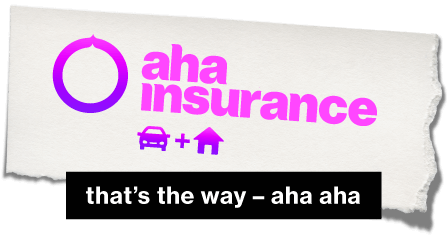Car insurance Thunder Bay, ON
Part of a series on car insurance rates in Ontario.

Car Insurance Thunder Bay FAQs
Is car insurance required in Thunder Bay?
Yes, all drivers are required to have car insurance that meets the minimum requirement of third-party liability coverage. This coverage provides protection in case you cause bodily injury or property damage to others in an accident. In Ontario, the minimum amount for third-party liability coverage is $200,000. Additionally, drivers in Thunder Bay must have direct compensation—property damage coverage (DCPD), accident benefits coverage, and uninsured motorist coverage included in their car insurance policies.
Drivers in Thunder Bay also have the option to select additional types of coverage, such as collision and comprehensive insurance. It’s important to recognize that the cost and availability of these extra coverage options can vary depending on factors like your driving history, vehicle type, and the specific coverage levels you opt for.
To ensure that you obtain the suitable and necessary coverage, it’s advisable to consult with an insurance broker. A knowledgeable insurance broker can converse about your requirements and offer expert guidance in selecting the most appropriate coverage options available in Thunder Bay. Their expertise can assist you in making well-informed choices regarding your car insurance coverage.
How can I save on car insurance in Thunder Bay?
Saving on car insurance in Thunder Bay requires a well-thought-out approach that considers a range of strategic steps and thoughtful considerations. The goal is to strike a balance between securing comprehensive coverage and optimizing your expenses. Here are some effective and actionable ways you can potentially take to reduce your car insurance costs:
Comparing Quotes:
Obtaining a single quote may not reflect the full spectrum of available options. Diverse insurance providers offer varying rates, discounts, and coverage features. By collecting quotes from multiple insurers, you gain a holistic understanding of the market and can make an informed decision. Utilize online comparison tools to streamline this process and pinpoint the most competitive rates.
Bundling Policies:
Insurers often incentivize bundling multiple policies, such as auto and home insurance, by offering discounts. Consolidating your insurance needs with a single provider reduces administrative hassle and leads to substantial cost savings. This approach fosters convenience while maximizing potential discounts.
Maintaining a Clean Driving Record:
A history of safe driving translates into tangible financial benefits. A clean driving record, devoid of accidents and traffic violations, demonstrates responsible driving behaviour. Insurance companies reward this behaviour by offering lower premiums, as it indicates a reduced risk of future claims.
Opting for a Higher Deductible:
Adjusting your deductible—the initial amount you pay before insurance coverage activates—can influence your premium rates. Opting for a higher deductible typically results in reduced premiums. However, consider your financial capacity to cover this amount if a claim arises.
Driving Less:
If your vehicle primarily serves short commutes or sees minimal usage, you might qualify for a low-mileage discount. Accurately conveying your driving habits to insurers ensures you receive the appropriate discount and acknowledge your limited exposure to potential risks.
Installing Safety Features:
Equipping your vehicle with advanced safety features enhances its protection and demonstrates your commitment to reducing risk. Anti-theft devices, airbags, anti-lock brakes, and other safety enhancements not only bolster your safety but also lead to potential premium reductions.
Exploring Discounts:
Insurance companies offer a plethora of discounts catering to different profiles. Safe driver rewards, multi-vehicle discounts, student incentives, senior benefits, and more can contribute to considerable premium reductions. Inquire about all available discounts to optimize your savings.
Vehicle Considerations:
When purchasing a vehicle, delve into its potential insurance costs. Factors such as repair expenses, safety ratings, and theft rates influence insurance premiums. An informed vehicle choice can result in significant long-term savings.
Trimming Unnecessary Coverage:
Regularly reviewing your coverage helps identify redundancies. For older vehicles, reassess the necessity of collision coverage. If the cost outweighs potential payouts, consider adjusting your coverage to match your needs.
Opting for Annual Payments:
If financially viable, choosing an annual premium payment method can yield savings. Many insurers extend discounts to policyholders who pay their premiums upfront, simplifying budgeting and reducing administrative costs.
Cultivating Loyalty:
Staying loyal to an insurer can occasionally result in loyalty discounts. However, loyalty should be balanced with prudent comparison shopping to ensure you’re getting the best value over time.
Leveraging Insurance Brokers:
Engaging an insurance broker provides you access to their expertise and extensive network of insurers. Brokers help navigate the intricacies of policies, ensuring you secure optimal coverage at competitive rates tailored to your specific needs.
How do I get car insurance as a new driver in Thunder Bay
Getting car insurance as a new driver in Thunder Bay requires a series of actions to ensure you obtain the right coverage for your specific requirements. Below, you’ll find a list of steps to follow to help you acquire car insurance in Thunder Bay.
1. Begin by researching different insurance providers in Thunder Bay.
2. Reach out to multiple insurance companies to request quotes.
3. Familiarize yourself with the various coverage options available.
4. Look for insurance providers that offer discounts for new drivers.
5. Talk to friends, family, or mentors with car insurance experience for insights, recommendations, and guidance on selecting the right coverage.
6. Engage an insurance broker who specializes in auto insurance.
7. When filling out applications or providing information to insurers, ensure accuracy, as any discrepancies could lead to issues during claims processing.
8. Select a coverage that matches your needs and budget.
9. Once you’ve selected an insurer and coverage, complete the application process.
10. Review the policy documents carefully before signing.
As you gain more driving experience and potentially qualify for discounts, don’t forget to regularly review and update your insurance policy to ensure you’re getting the best value.
What type of car insurance does aha insurance offer in Thunder Bay?
Aha insurance offers a range of diverse car insurance selections for your consideration.
Mandatory Coverage
In the province of Ontario, car insurance requirements include the following obligatory responsibilities:
Third-Party Liability Coverage
For Thunder Bay residents, maintaining third-party liability coverage is a fundamental element of car insurance. This obligatory coverage guarantees protection in situations
where you cause injury or property damage to others while operating your vehicle. It encompasses legal expenses, settlements, and claims up to the required minimum coverage threshold of $200,000. Possessing third-party liability coverage gives you the assurance to drive confidently, equipped with the essential coverage to manage potential liabilities that might arise on the roads of Thunder Bay.
Direct Compensation-Property Damage (DC-PD) Coverage
DC-PD coverage holds significance within car insurance. This coverage becomes relevant when your vehicle sustains damage in an accident caused by another party. With DC-PD coverage, you can obtain compensation directly from your insurance provider, bypassing the need to file a claim against the driver at fault. This approach offers a convenient and streamlined method to repair or replace your vehicle, saving you time and hassle. DC-PD coverage guarantees adequate protection in Thunder Bay, granting you the confidence to navigate the roads, secure in the knowledge that your vehicle is covered in the event of an accident caused by someone else.
Accident Benefits Coverage
For Thunder Bay residents, accident benefits coverage is an essential mandatory aspect of car insurance that extends benefits to individuals who sustain injuries in a car accident. This coverage encompasses a range of benefits, including medical expenditures, costs for rehabilitation, income replacement, and other associated expenses arising from an accident. With accident benefits coverage, individuals in Thunder Bay can access vital support and financial aid to aid in their recovery and manage the financial implications of their injuries. This coverage guarantees that those involved in car accidents in Thunder Bay have the necessary resources and assistance to help them rebuild their lives following an unfortunate incident on the road.
Uninsured Motorist Coverage
In Thunder Bay, uninsured motorist coverage is a compulsory facet of car insurance that provides protection in the event of an accident involving an uninsured, underinsured, or hit-and-run driver. This coverage offers security when the responsible driver lacks sufficient insurance to cover your injuries or damages. In such scenarios, uninsured motorist coverage steps in to compensate for your losses, encompassing medical costs, vehicle repairs, and other relevant expenses. By having this coverage in Thunder Bay, you can experience reassurance, knowing that you are financially safeguarded even if you come across an uninsured or underinsured driver while driving.
Optional Coverage
Moreover, there exist various optional coverage selections within car insurance, which encompass the following:
Comprehensive Coverage
This is an elective component of auto insurance that furnishes comprehensive safeguarding against damages to your vehicle not arising from collisions. This coverage extends to a variety of non-collision occurrences, including theft, vandalism, fire, hail, falling objects, and damages incurred from interactions with animals. Comparable to collision coverage, comprehensive coverage assists in addressing the costs linked to repairing or substituting your vehicle, considering its current market value and the deductible you’ve opted for.
Collision Coverage
Collision coverage is a choice within automobile insurance that ensures financial protection against damages to your vehicle due to collisions with other vehicles or objects in an at fault claim. This coverage aids in managing the expenses associated with mending or replacing your vehicle up to its existing market value while factoring in the deductible amount you’ve chosen.
Specified Perils Coverage
Specified perils coverage constitutes an optional variant of auto insurance that delivers specialized shielding against a predetermined roster of hazards delineated in your policy. These hazards often encompass distinct perils such as fire, theft, hail, lightning, and other perils explicitly itemized within the policy. By choosing specified perils coverage, you attain insurance against damages stemming from the hazards explicitly outlined in the policy, although coverage for damages caused by other perils might not be encompassed.
All Perils Coverage
All perils coverage constitutes an encompassing and comprehensive genre of auto insurance that amalgamates collision and comprehensive coverage. Opting for all perils coverage renders you safeguarded against an extensive array of risks, including collisions, theft, fire, vandalism, and various other perils unless specifically excluded in the policy. This coverage bestows a more comprehensive and thorough level of protection for your vehicle.
What factors affect my Thunder Bay car insurance?
In Thunder Bay, various elements can considerably influence the expenses of your car insurance premiums. It’s imperative to have an understanding of these elements, as they hold a pivotal role in establishing the price you’ll pay for your insurance coverage. Here are just some of the key factors that insurance providers take into account:
Driving History
Your past record on the road assumes paramount importance in the eyes of insurance companies. A clean history devoid of accidents, claims, or traffic violations signifies you as a low-risk driver, often translating into reduced insurance premiums. Conversely, if your record shows a pattern of accidents or infractions, insurers might perceive you as a higher risk, potentially resulting in elevated premiums.
Age and Experience
For those in Thunder Bay, youthful and less experienced drivers frequently encounter higher insurance costs. This stems from their limited time behind the wheel and statistical data indicating increased accident likelihood. As you accumulate more driving experience and attain age milestones such as 25, insurance premiums generally see a
decline. This shift reflects your growing experience and enhanced responsibility on the road, making you a more favourable insurance candidate.
Type of Vehicle
The brand, model, and production year of your automobile wields substantial influence over insurance premiums. Cars that fall under the category of luxury or high-performance vehicles often incur elevated insurance expenses due to the potential for expensive repairs or attractiveness to thieves. Moreover, vehicles outfitted with advanced safety features and boasting commendable safety ratings could potentially secure discounts on their premium rates.
Coverage Choices and Deductibles
The extent of coverage you opt for and the deductible amount you’re willing to undertake have a direct bearing on your premium outlay. Opting for broader coverage limits, ensuring a more comprehensive shield, or selecting lower deductible levels (the sum you contribute in the event of a claim) usually correlates with elevated premiums. Conversely, if you choose to go for limited coverage or higher deductibles, you may experience a decrease in premiums while potentially assuming a greater risk in case of an accident.
Yearly Distance Traveled
The annual mileage you cover can have an impact on your insurance costs. Insurance providers recognize that greater mileage translates to heightened exposure to potential accidents. Individuals with lengthier commutes or a penchant for long-distance driving may encounter higher insurance premiums compared to those who cover fewer miles.
Geographical Area
The location you call home and where you park your vehicle can have implications for your insurance premiums. In regions marked by higher population densities and an increased frequency of accidents, vehicle theft, or vandalism, insurers may perceive a heightened risk profile and subsequently levy higher premiums. Moreover, opting for secure garage parking or integrating anti-theft measures could potentially contribute to premium reductions.
Fast facts about auto insurance in Thunder Bay
Average annual car insurance rate
Regular drivers in the city
Collisions per year (approximately)
%
Collision rate for the city
Average age
Average household income
%
Unemployment rate
Population
Understanding car insurance in Thunder Bay, Ontario
Sitting halfway between Sudbury and Winnipeg, Thunder Bay is one of the major cities in northern Ontario. Despite harsh winters and a lot of open road, residents here actually have great car insurance rates on average.
Get your bundle on & save!
Want even cheaper insurance? Save up to 50% on home and up to 15% on car insurance when you bundle them.

Get your bundle on & save!
Want even cheaper insurance? Save up to 50% on home and up to 15% on car insurance when you bundle them.

Busting myths about driving and insurance in Thunder Bay
Myth: Thunder Bay’s jobs are far away, forcing you to commute.
False. The vast majority of Thunder Bay’s workforce has a local commute within the city’s boundaries. Specifically, about 85% of the city’s workforce works locally (according to Statistics Canada). There’s an overwhelming chance that you won’t have to drive very far.
45.3% of the workforce commutes for 15 minutes or less.
Myth: Thunder Bay isn’t a safe place to live.
Thunder Bay does have a higher crime severity index than most of Ontario, but there are 67 more dangerous cities in Canada as of 2019. Thunder Bay’s index of 88 is eclipsed by North Battleford (372), Red Deer (222), and even Regina (117).
With that said, the city does have the highest rate of homicides per 100,000 people across Canada.
Myth: Thunder Bay is an overwhelmingly industrial city.
False. In fact, Thunder Bay is home to over 100 parks inside of the city, never mind all of the natural trails you can hike outside of the city.
It’s not true about the job market, either. Healthcare is the largest employment sector by far, followed by retail, education, public administration, and food services.
Myth: Thunder Bay is out of the way, making highway access difficult.
Not true. Highway 17 runs north-south along the city’s western edge, becoming Highway 61 south of its intersection with Highway 11 (the Harbour Expressway).
Thunder Bay is a decent distance from the nearest major population centres, but that makes it a crucial stop along Ontario’s supply line through northern Ontario.
How Thunder Bay’s rates compare to other cities in Ontario
- North York: $4,261
- Etobicoke: $4,199
- Brampton: $4,071
- Scarborough: $3,825
- East York: $3,605
- Woodbridge: $3,603
- Richmond Hill: $3,579
- Mississauga: $3,473
- Markham: $3,389
- Niagara Falls: $3,321
- Bowmanville: $3,308
- Peterborough: $3,259
- Pickering: $ 3,245
- Newmarket: $ 3,216
- Hamilton: $3,201
- Brantford: $ 3,158
- Maple: $3,150
- Whitby: $3,087
- Ajax: $3,053
- York: $2,999
- Toronto: $2,983
- Barrie: $2,924
- Thornhill: $2,871
- Waterloo: $2,867
- Caledon: $2,780
- London: $2,765
- Fort Erie: $2,720
- Oakville: $2,720
- Sault Ste Marie: $ 2,713
- Kitchener: $2,705
- Milton: $2,680
- St Catharines: $ 2,550
- Windsor: $2,536
- Woodstock: $2,513
- Innisfil: $2,505
- Burlington: $2,476
- Kingston: $ 2,360
- Cambridge: $2,297
- Oshawa: $2,295
- Guelph: $2,268
- Gloucester: $2,256
- Stoney Creek: $2,222
- Nepean: $2,196
- Ottawa: $2,195
- Sudbury: $2,005
- Kanata: $2,002
- Thunder Bay: $1,973
- Wasaga Beach: $1,958
Quick tips on insurance and driving in Thunder Bay
Thunder Bay gets nasty winters. Invest in winter tires, because they work.
Thunder Bay gets the worst of both worlds when it comes to winter.
The science is in. Winter tires work better than summer or all-season tires under 7 degrees celsius. They get more traction, they don’t harden up like regular tires, and they allow you to brake faster and more safely.
The best part? Ontario’s insurance companies give you an insurance discount for using them.
Avoid Thunder Bay’s most dangerous intersections to protect yourself.
Dangerous intersections increase your odds of being in a collision. Collisions hurt you as much as they hurt your auto rates, so avoid the worst ones whenever you can. Here’s the list:
- Balmoral Street and Harbour Expressway
- Golf Links Road and Harbour Expressway
- Arthur Street and James Street South
- Harbour Expresway and Memorial Avenue
Avoid neighbourhoods with high rates of claims and reported crimes.
Car insurance rates are affected by where you live. The statistical odds of a claim being made over property damage or car theft differs everywhere, so living in these neighbourhoods could help reduce rates:
- Communities south of Arthur Street and north of Mary Street
- South of Arthur Street East and east of Edward Street South
- Neigbbourhoods surrounding Chapples Municipal Golf Course.
- Neighbourhoods north of River Street, and even some south of it.
Sources for fast facts about Thunder Bay:
- Statistics Canada, Thunder Bay 2016 Census Profile
- Ministry of Transportation, 2016 Road Safety Report
- TB News Watch, “Thunder Bay’s most dangerous intersections in 2017”
- CBC News, “Thunder Bay, Ont. once again homicide capital of Canada”
- Thunder Bay Police Community Crime Map
- Maclean’s, “Canada’s Most Dangerous Places 2019”
- Thunderbay.ca, “City Parks”
- CBC News, “Beware slippery winter driving: Thunder Bay police”
Source for average insurance rates by city:
- Survey of 2,800 auto insurance policy holders in Ontario

Google Rating: 4.8
Hot Dang! Those are some beautiful words from beautiful people.






























